FROM THE ARCHIVE – FEBRUARY 2017…………….
I’ve never been a big fan of Valentine’s Day. At school it was just humiliating. There was always someone who had six cards and I usually had just one. You could guarantee that the one I had was not from the one person I wanted it to be from. Horrible, painful, a waste of time I used to think…..However if you put Valentine’s Day in it’s historical context it is actually quite interesting.
ROMAN TIMES – In early Roman times there was a pagan festival called ‘Lupercalia’ an ancient fertility ritual connected with the first day of spring. This was the day in mid-February when the birds would suddenly come alive after the bleak winter and start to look for a mate. Later in Roman times there were several men known as Valentine, the most interesting of whom was Saint Valentine of Rome. Valentine was an early Christian who was imprisoned by the Romans for conducting marriage ceremonies for soldiers who were forbidden to marry because they were Christian. He was thrown into prison and condemned to death. Whilst in prison he ‘healed’ the daughter of the jailer, who was blind, and restored her sight. Her name was Julia. Despite this good deed he was executed around 269 AD, legend has it that he left a note to Julia signed ‘Your Valentine’. Tragically for him, less than fifty years later Christianity became the official religion of the Roman Empire. It was just a few decades too late for Valentine.
IN THE BEGINNING – the foundation of Valentine’s Day is partly pagan and partly Roman. It is a day of romance and courtship. This idea was developed further by Chaucer in his Canterbury Tales when the idea of ‘courtly love’ became fashionable. When Shakespeare wrote ‘Romeo and Juliet’ one of his finest plays – he created a romance between two young, star-crossed lovers based in the elegant and historic city of Verona. Romeo was part of the Montague family whilst Juliet was a Capulet. The two families were at war at the time and their love was an impossibility. The play ends tragically with both Romeo and Juliet dead. Their story has become famous as the ultimate forbidden romance. To this day Juliet’s house in Verona and the balcony where she stood is a popular pilgrimage place for visitors from around the world. Young couples wait patiently to have their photograph taken with Juliet’s balcony in the background. Verona has become a city associated with love and romance.
Meanwhile, Shakespeare in ‘Hamlet’ has Ophelia speaking the following lines,
‘Tomorrow is St Valentine’s Day, All in the morning betime, And I a maid at your window, To be your Valentine’. (c. 1600)
By the 1790s ‘The Young Man’s Valentine Writer’ was published in Britain containing many sentimental verses for a young gentleman to send to his lover. Valentine cards were made with lace and ribbon. They were delivered by hand and later by post. It is estimated that almost half a million Valentine cards were sent in the UK by 1840. The fashion spread to America, where an enterprising young woman called Esther Howland began importing ribbon and lace from England to make similar cards. As postal services improved in the UK and America it became simple to send anonymous greetings to your ‘loved one’ on Valentine’s Day. Today it is estimated that almost 200 million Valentine cards are sent in the USA alone.
Starting a few years ago Verona has hosted a charming and whimsical ‘Verona in Love’ Festival every Valentine’s Day. The event includes a heart-shaped red carpet in Piazza dei Signori surrounded by cute little stalls selling chocolates, candles and ‘romantic gifts’. There are concerts, stage productions, heart-shaped balloons. This is a festival of love and romance, it is about honouring and appreciating romance. It is engaging and endearing in its honesty. After all Italy is the country of romance and what better place to be on Valentine’s Day. In the words of the Verona Tourist Office ‘Se Ami Qualcuno Portarlo a Verona’ which means ‘If you love someone then take them to Verona’. Let’s face it Valentine’s Day is big business in the 21st century and here in Verona it is also unexpectedly poignant.
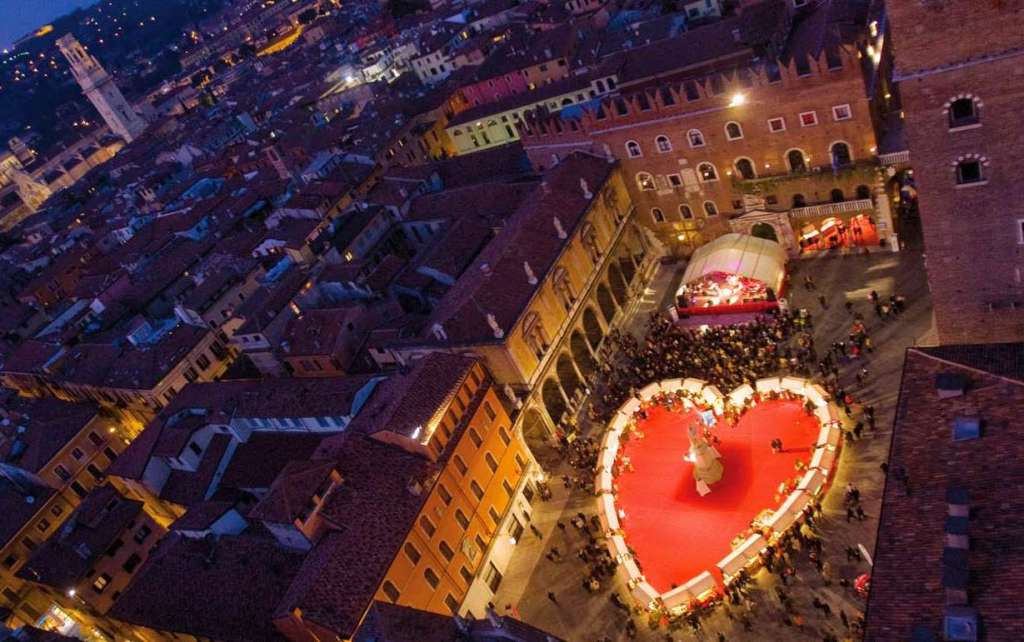
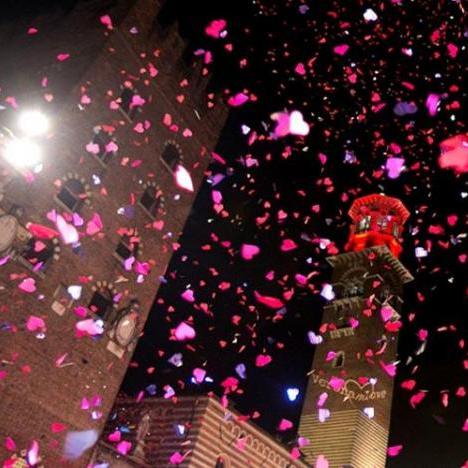
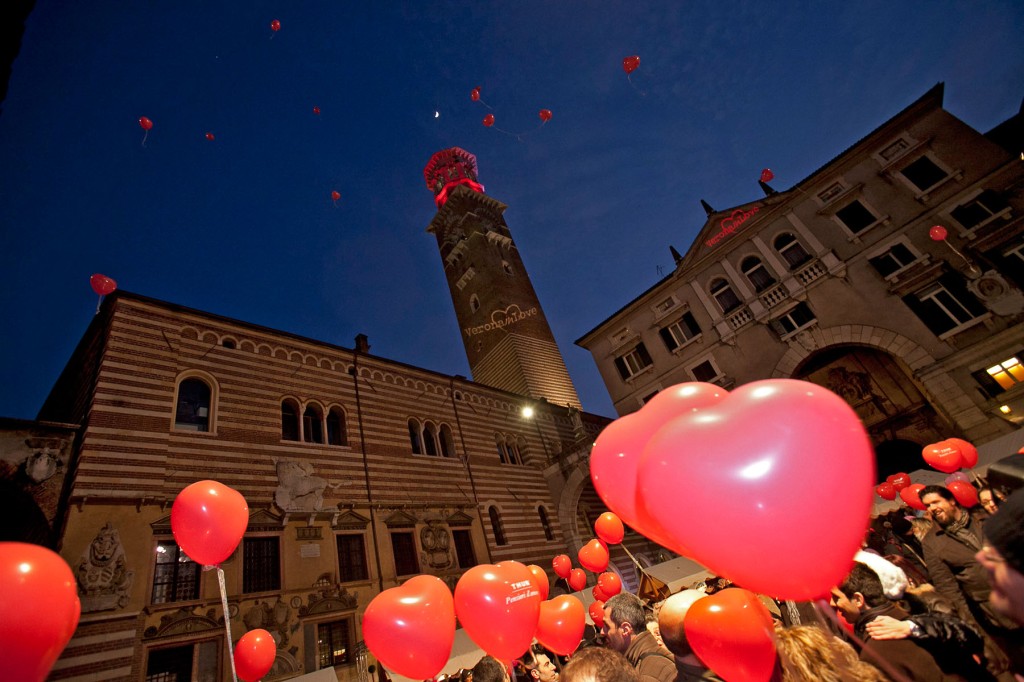

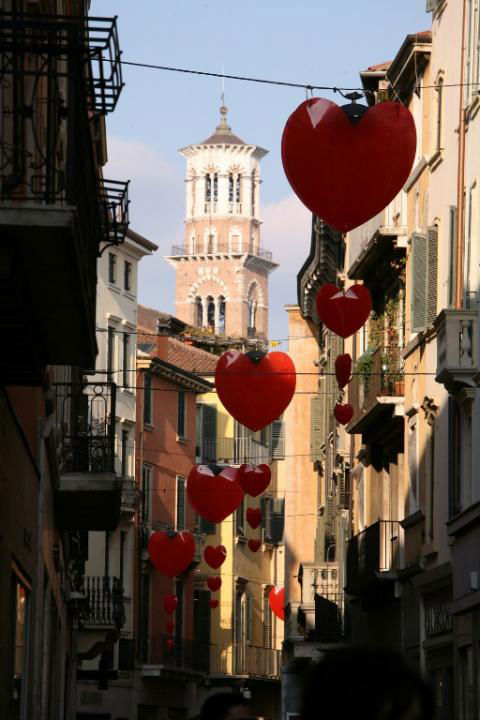
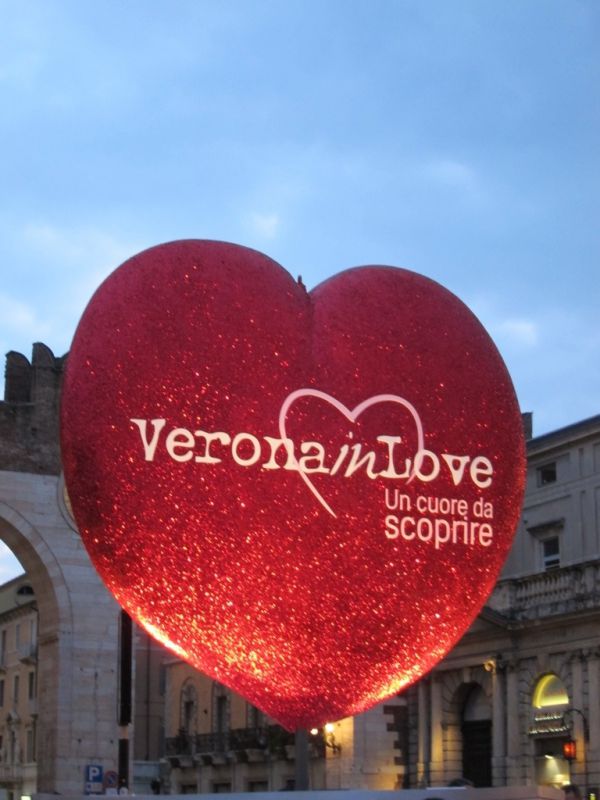

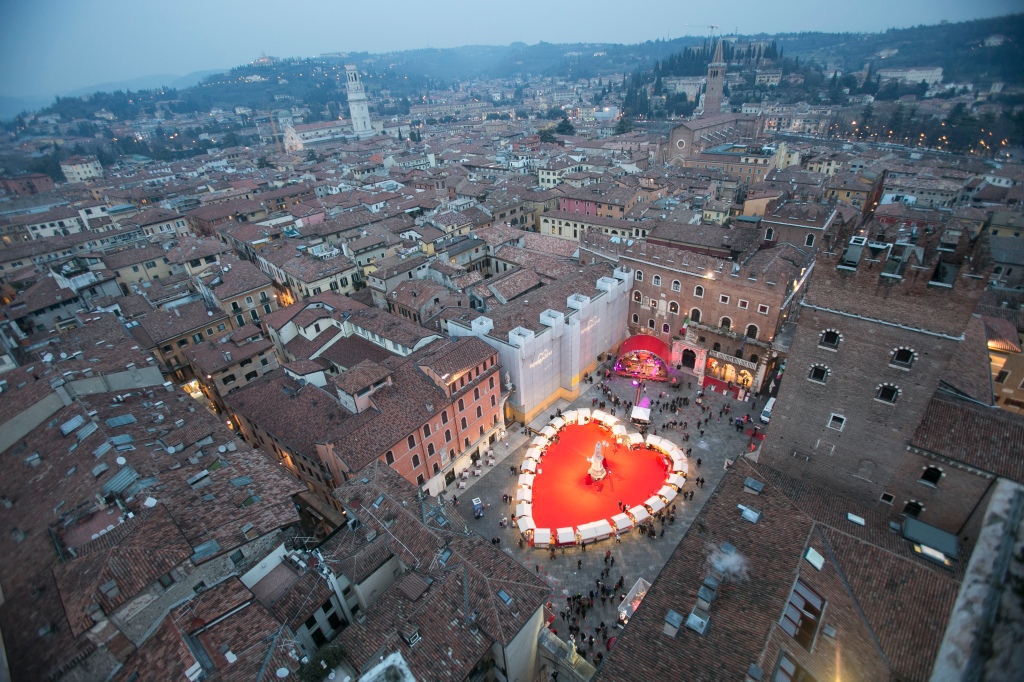
Notes:
- With thanks to the Tourist Office in Verona for creating this spectacular event in 2016.
- Photos courtesy of ‘Tourism Verona’
- With thanks to Laura at ‘Bell’Asolo’ for bringing this festival to my attention.
- If you’d like to visit Verona then check out our ‘luxury package’ offered through our sister company: Grand Tourist
- Verona – City of Romeo and Juliet – Verona – City of Romance
- Questions or comments to Janet at Educated Traveller
- Verona, Venice, Palladian Villas are all included in Grand Tourist tours to the Veneto contact: janet@grand-tourist.com for more details or a tailor-made itinerary to one of these wonderful places.
Note – Verona is a fabulous small city to visit. The annual opera season in the Roman Arena is unmissable too.
La Traviata for me – just love this opera – always my favourite!
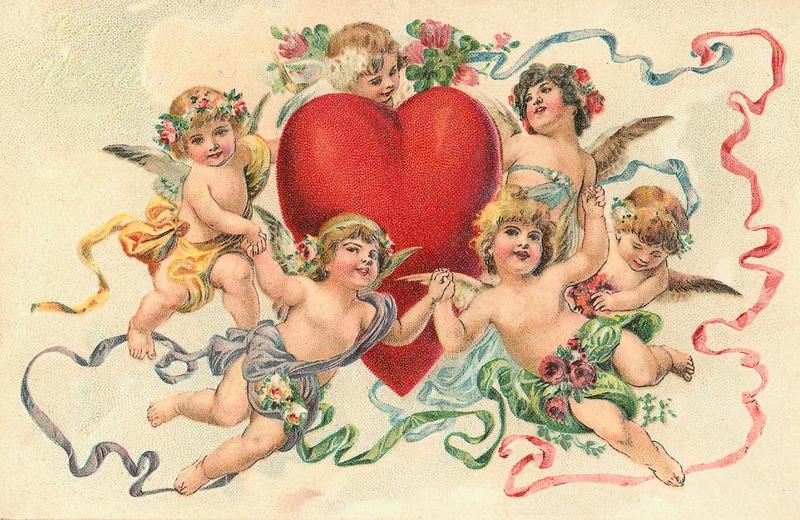

Such a sweet story, Janet! And Valentine’s Day usually involves chocolate too, which makes it even better! A well-written piece!
LikeLiked by 1 person